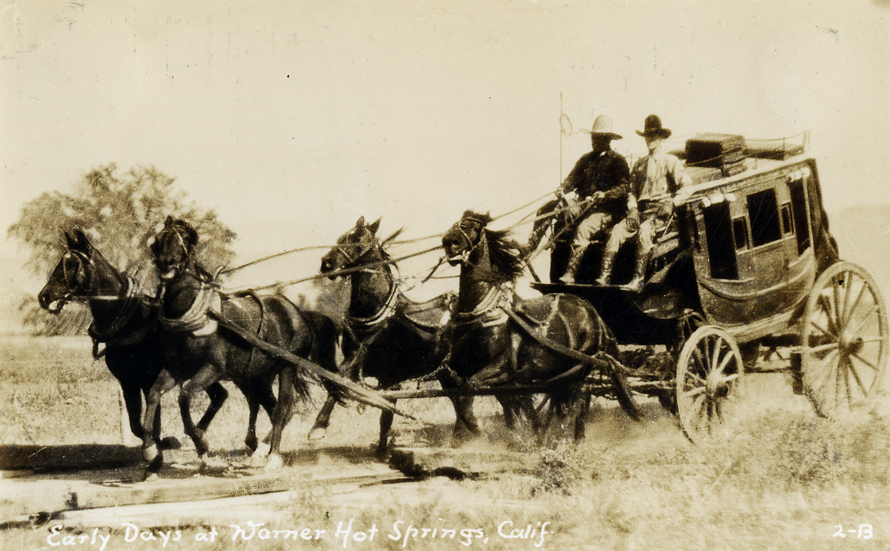 |
 |

Photo courtesy Coons collection (Click image)
AS CALIFORNIA'S FIRST regular overland transcontinental stage connection with St. Louis, this pioneering stage route ran along the Missouri Trail. The trail was the most southerly and only all-weather route to California. Built directly beside the immigrant trail, it figured prominently in the settlers' diaries as their first glimpse of the promised land, the first well watered valley to be encountered after crossing the great southwestern deserts. The historic setting has changed very little from the time of the great western migration and presents a rare opportunity to experience the past.
|
Introduction | Warner's Ranch | Carrillo Period | Westward Ho! | All Aboard! | Stage Stations in California
The Cattle Barons | Career Cowboys | Restoration
HOME | DONATE